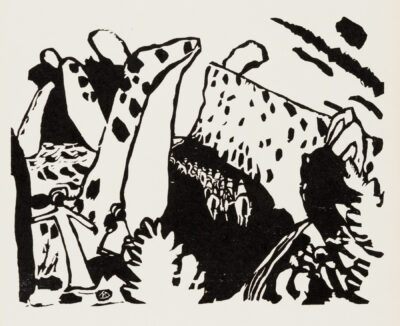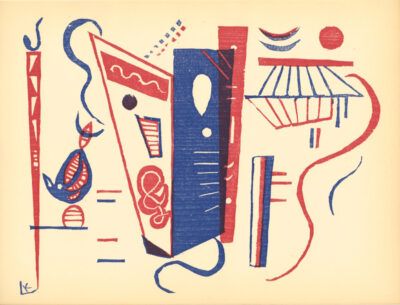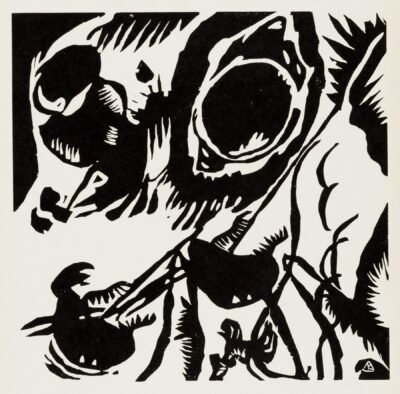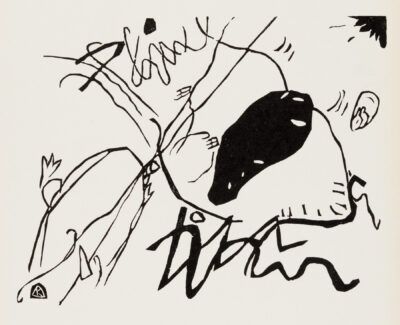Wassily Kandinsky
(Russian, 1886-1944)
Biography
Kandinsky was born in Moscow in 1866, but spent his early childhood in Odessa. His parents played the piano and the zither and Kandinsky himself learned the piano and cello at an early age. The influence of music in his paintings cannot be overstated, down to the names of his paintings: Improvisations, Impressions, and Compositions. In 1886 he enrolled at the University of Moscow, chose to study law and economics, and after passing his examinations, lectured at the Moscow Faculty of Law. He enjoyed success not only as a teacher but also wrote extensively on spirituality, a subject that remained of great interest and ultimately exerted substantial influence on his work. In 1895 Kandinsky attended a French Impressionist exhibition where he saw Monet’s “Haystacks at Giverny.” He stated, “It was from the catalog I learned this was a haystack. I was upset I had not recognized it.” Soon thereafter, at the age of thirty, Kandinsky left Moscow and went to Munich to study life-drawing, sketching and anatomy, regarded then as basic for an artistic education.
Ironically, Kandinsky’s work moved in a direction that was of much greater abstraction than that which was pioneered by the Impressionists. It was not long before his talent surpassed the constraints of art school and he began exploring his own ideas of painting – “I applied streaks and blobs of colors onto the canvas with a palette knife and I made them sing with all the intensity I could…” Now considered to be the founder of abstract art, his work was exhibited throughout Europe starting in 1903 and often caused controversy among the public, the art critics, and his contemporaries. An active participant in several of the most influential and controversial art movements of the 20th century, among them the Blue Rider, which he founded along with Franz Marc, and the Bauhaus School which also attracted Paul Klee, Lyonel Feininger and Schonberg. Kandinsky continued to further express and define his form of art, both on canvas and in his theoretical writings. His reputation became firmly established in the United States through numerous exhibitions and his work was introduced to Solomon Guggenheim, who became one of his most enthusiastic supporters.
In 1933, Kandinsky left Germany and settled near Paris, in Neuilly. The paintings from these later years challenged the general public, though they provided tremendous inspiration to the younger artists who great admired his work. Artists including Miro, Arp, Magnelli and Sophie Tauber visited Kandinsky’s studio regularly.
Kandinsky continued painting up to his death in June 1944. His unrelenting quest for new forms carried him to the very edge of geometric abstraction and inspired untold numbers of 20th century artists. His works today are featured in most every major museum in the world.






